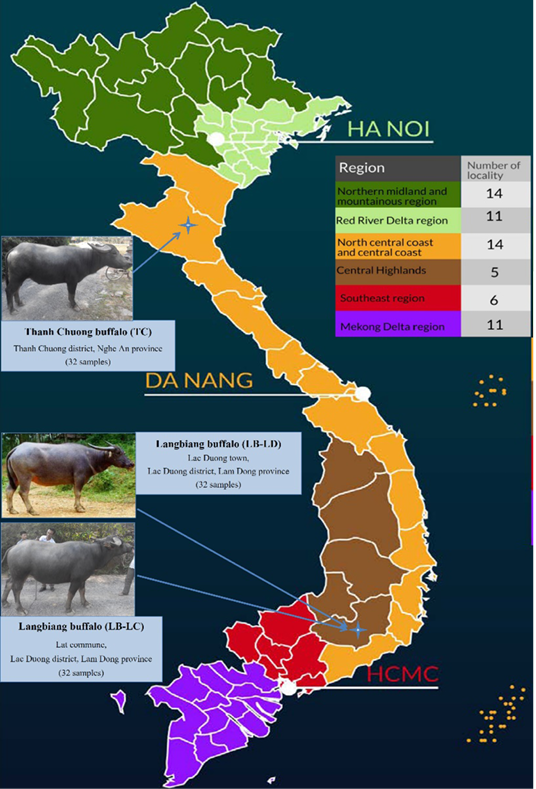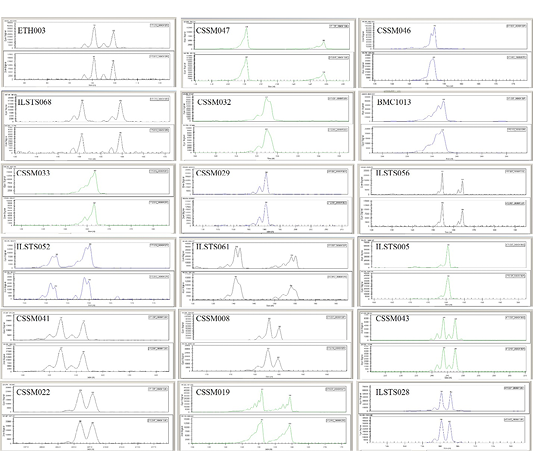Genetic Divergence of Two Vietnamese Swamp Buffalo Populations using Microsatellite Markers
Genetic Divergence of Two Vietnamese Swamp Buffalo Populations using Microsatellite Markers
Van Dai Nguyen1, ¥, Van Ba Nguyen2, ¥, Thi Thanh Nhan Giang2, Cong Dinh Nguyen2, Thi Lan Nguyen1, Dinh Ngoan Vu1, Duc Chuyen Nguyen1, Van Can Ta1, Khac Khanh Nguyen2, Thi Lien Cao2, Doan Lan Pham2, Khanh Van Nguyen2, Ngoc Tan Nguyen3*
Representative images of buffaloes in the six eco-economic regions.
Representative images of the polymorphic microsatellite sites used in this study.Figure 2: Representative images of the polymorphic microsatellite sites used in this study.
PCA result of TC and LB buffalo populations (A), and a neighbor-joining tree showing the genetic relationships between LB and TC buffalo populations (B) based on 18 microsatellite markers.









